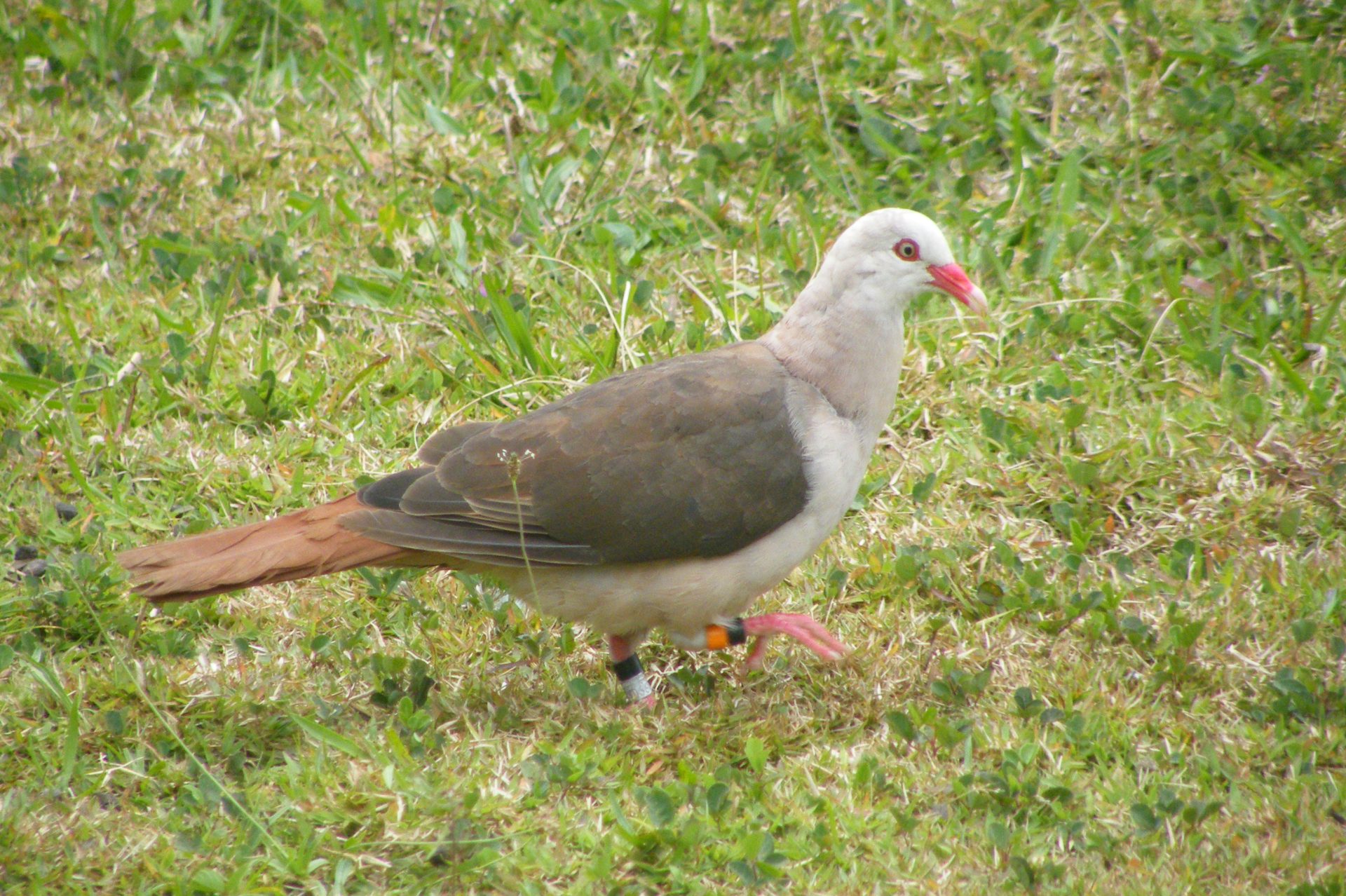The authors of a major study, including Professor Jim Groombridge and Dr Hazel Jackson warn that boosting species numbers of the once critically endangered pink pigeon is not enough to save it from extinction in the future without continued conservation actions.
Professor Jim Groombridge and Dr Hazel Jackson (Durrell Institute of Conservation and Ecology [DICE]), have warned that boosting species numbers of the once critically endangered pink pigeon is not enough to save it from extinction in the future.
Despite the population increase, the international team’s analysis shows the pink pigeon has a high genetic load of bad mutations, which puts it at considerable risk of extinction in the wild within 100 years without continued conservation actions.
The research led by scientists from DICE, the University of East Anglia (UEA) and the Earlham Institute in the UK, working with organisations on the ground in Mauritius, investigated the genetic impacts of a population ‘bottleneck’ – a rapid collapse in numbers that affected the pink pigeon from Mauritius in the late 1980s, with only 12 birds surviving in the wild.
The team analysed the DNA of 175 birds sampled over nearly 20 years as subsequent conservation efforts took place.
With the help of biologists from the Mauritian Wildlife Foundation and the Durrell Wildlife Conservation Trust, and in partnership with the Government of Mauritius’ National Parks and Conservation Service, the free-living population of the species has increased to around 500 birds.
Consequently, the pink pigeon has been down-listed twice on the International Union for Conservation of Nature Red List from critically endangered to vulnerable.
However, to keep these populations viable, the researchers warn that ‘genetic rescue’ is needed to recover lost genetic variation caused by inbreeding and to reduce the effects of the harmful mutations. This can be achieved by releasing captive-bred birds from UK and EU zoos.
The study, published in Conservation Biology, used conservation genetic work at DICE, cutting-edge genomic techniques developed at UEA and the Earlham Institute, and computer modelling to closely examine the species’ DNA and assess the risk of future extinction, as well as forecasting what needs to be done to secure the pink pigeon’s viability. The authors say their findings could help other threatened species.
Groombridge explained how the initial recovery of the pink pigeon population was achieved: ‘A captive population of pink pigeons in the Gerald Durrell Endemic Wildlife Sanctuary in Mauritius, jointly managed by the Mauritian Wildlife Foundation and the National Parks and Conservation Service, was established in the 1970s.
‘This was used to breed birds for release into the wild, which boosted population numbers. The team also restored habitat by controlling introduced species and provided supplementary food as part of a field programme of intensive conservation management, which further increased the free-living population.’
UEA’s Professor Cock van Oosterhout, one of the lead authors, said: ‘By studying the genome of a recovered species that was once critically endangered, we can learn how to help other species to bounce back from a population collapse. During the pigeon’s population bottleneck, the gene pool lost a lot of variation, and many bad mutations increased in frequency. This genetic load still poses a severe threat, even though the population has recovered in numbers.’
Dr Hernan Morales from University of Copenhagen, in Denmark, who performed the SLiM modelling, added: ‘The computer simulations clearly show that just boosting numbers isn’t enough. The population also needs ‘genetic rescue’ from more genetically diverse birds bred in European zoos. These birds are not as closely related, and they can help to reduce the level of inbreeding. However, there is a risk that we could introduce other bad mutations from the zoo population into the wild.’
The research paper ‘Genomic erosion in a demographically recovered bird species during conservation rescue’ is published in Conservation Biology. doi: 10.1111/cobi.13918

